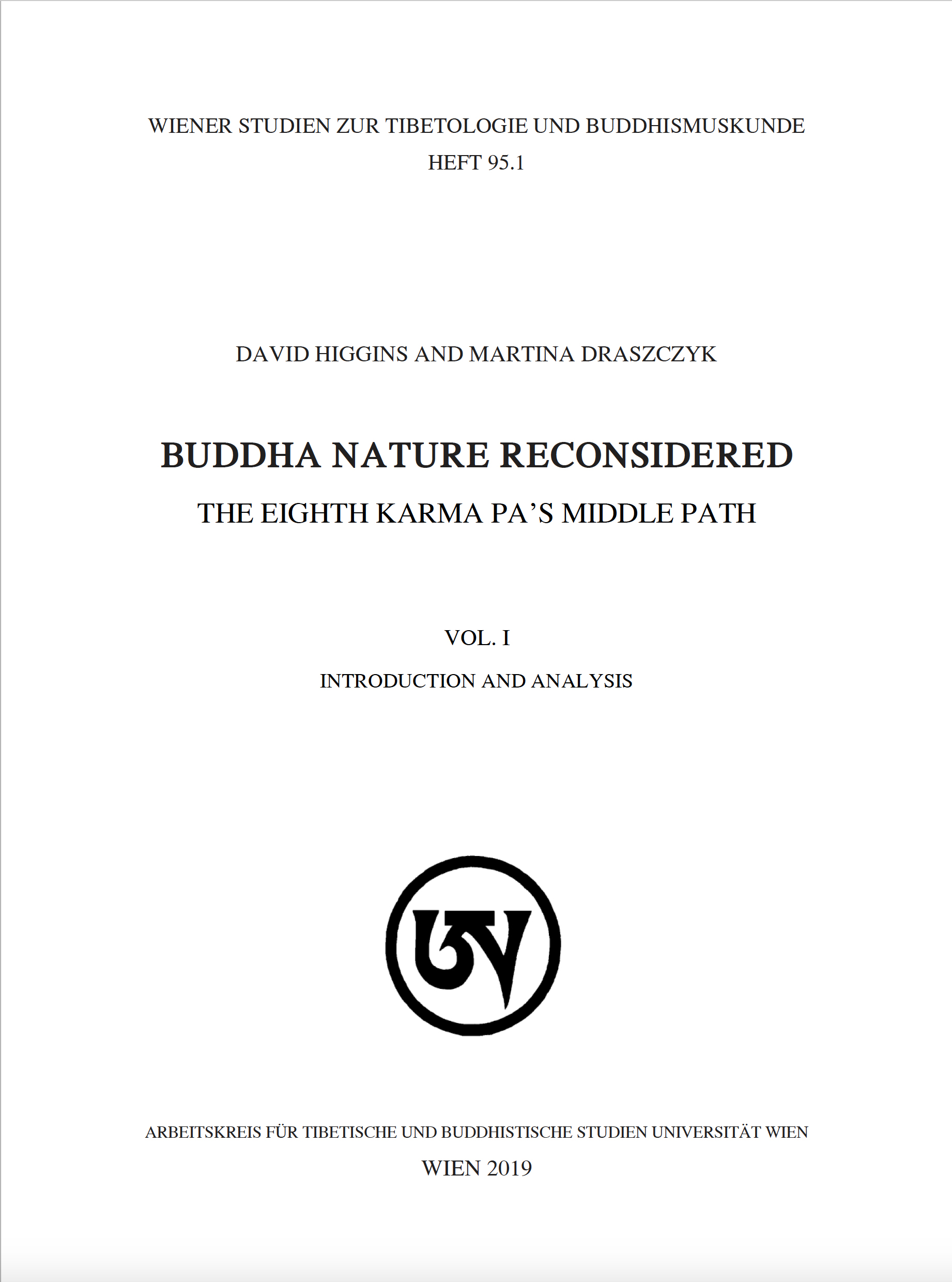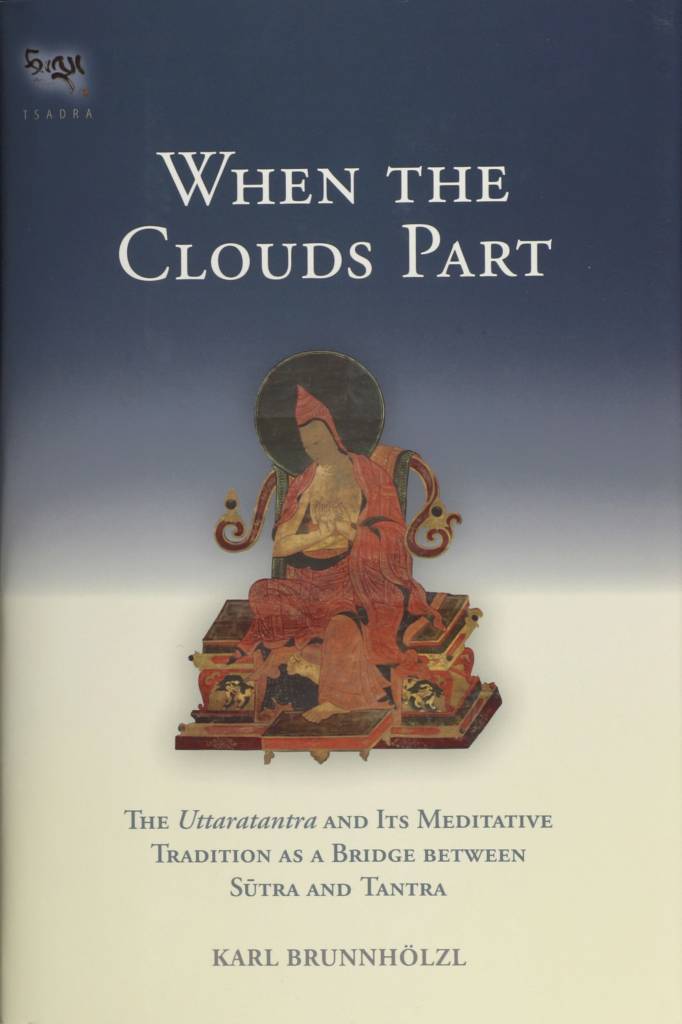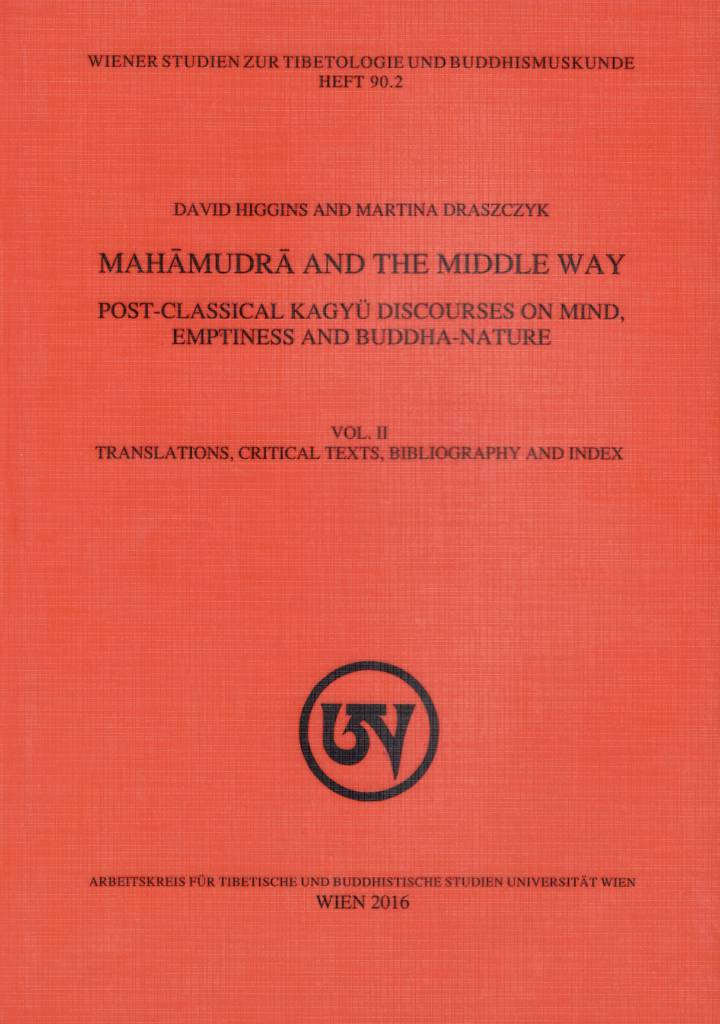Difference between revisions of "The Traditions of Ngok and Tsen"
| Line 3: | Line 3: | ||
|image=File:Ngok Lotsawa.jpg | |image=File:Ngok Lotsawa.jpg | ||
|imagePosition=left | |imagePosition=left | ||
| − | |description=The Tibetan traditions generally divide the primary modes of exegesis on the Ratnagotravibhāga into two lines of transmission known as the analytic tradition (thos bsam gyi lugs) and the meditative tradition (sgom lugs). These two traditions originated with the Tibetan disciples of the Kashmiri master Sajjana, namely Ngok Lotsāwa and Tsen Khawoche, respectively. Therefore, these two are also commonly referred to as the Ngok Tradition (rngog lugs), representing the scholarly or analytic approach, and the Tsen Tradition (btsan lugs) representing the more practice oriented meditative approach. Though it is likely the diverging motivations of these two figures in requesting these teachings from their mutual teacher that would set these traditions on their respective trajectories. | + | |description=The Tibetan traditions generally divide the primary modes of exegesis on the ''Ratnagotravibhāga'' into two lines of transmission known as the analytic tradition (''thos bsam gyi lugs'') and the meditative tradition (''sgom lugs''). These two traditions originated with the Tibetan disciples of the Kashmiri master [[Sajjana]], namely [[Ngok Lotsāwa]] and [[Tsen Khawoche]], respectively. Therefore, these two are also commonly referred to as the Ngok Tradition (''rngog lugs''), representing the scholarly or analytic approach, and the Tsen Tradition (''btsan lugs'') representing the more practice oriented meditative approach. Though it is likely the diverging motivations of these two figures in requesting these teachings from their mutual teacher that would set these traditions on their respective trajectories. |
<div class="text-right zoom-80"> | <div class="text-right zoom-80"> | ||
{{RelatedButton | {{RelatedButton | ||
Revision as of 17:51, 23 January 2020
Watch & Learn
From the Masters
Gampopa
As told by Gö Lotsāwa Zhönu Pal:
- དེ་ཡང་དྭགས་པོ་རིན་པོ་ཆེས་དཔལ་ཕག་མོ་གྲུ་པ་ལ། འོ་སྐོལ་གྱི་ཕྱག་རྒྱ་ཆེན་པོ་འདིའི་གཞུང་ནི་བཅོམ་ལྡན་འདས་བྱམས་པས་མཛད་པའི་ཐེག་པ་ཆེན་པོ་རྒྱུད་བླ་མའི་བསྟན་བཅོས་འདི་ཡིན་ཞེས་གསུངས་ཤིང་། དཔལ་ཕག་མོ་གྲུ་པས་ཀྱང་རྗེ་འབྲི་ཁུང་པ་ལ་དེ་སྐད་དུ་གསུངས་པས། རྗེ་འབྲི་ཁུང་པ་དཔོན་སློབ་ཀྱི་གསུང་རབ་རྣམས་སུ་ཐེག་པ་ཆེན་པོ་རྒྱུད་བླ་མའི་བཤད་པ་མང་དུ་འབྱུང་བ་དེ་ཡིན་ནོ།
- Moreover, Dagpo Rinpoché (Gampopa) said to Pagmo Drupa:
"The basic text of this mahāmudrā of ours is the Mahāyānottaratantraśāstra (Ratnagotravibhāga) by Venerable Maitreya." Pagmo Drupa in turn said the same thing to Jé Drigungpa (Rje 'Bri gung pa), and for this reason many explanations of the Mahāyānottaratantraśāstra are found in the works of Jé Drigungpa and his disciples.~ 'gos lo tsA ba gzhon nu dpal. Deb ther sngon po. Chengdu: Si khron mi rigs dpe skrun khang, 1984: Vol. 2, p. 847.
-Translation from Mathes, Klaus-Dieter. A Direct Path to the Buddha Within: Go Lotsāwa's Mahāmudrā Interpretation of the Ratnagotravibhāga. Studies in Indian and Tibetan Buddhism. Boston: Wisdom Publications, 2008: pp. 34-35.
As quoted by Śākya Chokden:
- དེ་ཡང་སྒམ་པོ་པས་གསུངས་པ། ང་ཡི་ཕྱག་རྒྱ་ཆེན་པོ་ཡི། ངོས་འཛིན་རང་གི་རིག་པ་སྟེ། གཞུང་ནི་རྒྱུད་བླའི་བསྟན་བཅོས་ཞེས།
- In that regard Gampopa says, “the hallmark of my Mahāmudrā is self-awareness and its scriptural source is the Uttaratantraśāstra”.
~ shAkya mchog ldan. phyag rgya chen po gsal bar byed pa'i bstan bcos tshangs pa'i 'khor los gzhan blo'i dregs pa nyams byed. In gser mdog paN chen shAkya mchog ldan gyi gsung 'bum. rdzong sar: rdzong sar khams bye'i slob gling thub bstan dar rgyas gling, 2006-2007: Vol. 17, p. 443.
-Translation adapted from David Higgins and Martina Draszczyk. Mahāmudrā and the Middle Way: Post-Classical Kagyü Discourses on Mind, Emptiness and Buddha-Nature. Vienna: Arbeitskreis für Tibetische und Buddhistische Studien Universität Wien, 2016: Vol. 2, p. 17.
Third Karmapa Rangjung Dorje
In his The Treatise on Pointing Out the Tathāgata Heart, the Third Karmapa states:
- །ཐ་མལ་ཤེས་པ་དེ་ཉིད་ལ།
།ཆོས་དབྱིངས་རྒྱལ་བའི་སྙིང་པོ་ཟེར།
།བཟང་དུ་འཕགས་པས་བཏང་བ་མེད།
།ངན་དུ་སེམས་ཅན་གྱིས་མ་བཏང་།
།ཐ་སྙད་དུ་མ་བརྗོད་མོད་ཀྱང།
།རྗོད་པས་དེ་ཡི་དོན་མི་ཤེས།- Just this ordinary mind
Is called "dharmadhātu" and "Heart of the victors."
It is neither to be improved by the noble ones
Nor made worse by sentient beings.
It may no doubt be expressed through many conventional terms,
But its actual reality is not understood through expressions.~ rang byung rdo rje, (Karmapa, 3rd). de bzhin gshegs pa'i snying po bstan pa'i bstan bcos. In gsung 'bum rang byung rdo rje. Zi ling: mtshur phu mkhan po lo yag bkra shis, 2006: Vol. 7, p. 285.
-Translation from Karmapa, The Third, Rang byung rdo rje. Luminous Heart: The Third Karmapa on Consciousness, Wisdom, and Buddha Nature. Translated by Karl Brunnhölzl. Nitartha Institute Series. Ithaca, NY: Snow Lion Publications, 2009: pp. 354-355.
In Jamgön Kongtrul's Treasury of Knowledge he references the Third Karmapa from unknown source, claiming:
- རང་བྱུང་ཞབས་ཀྱིས།
- །གནས་ལུགས་སྤྲོས་བྲལ་ཕྱག་རྒྱ་ཆེན་པོ་ནི།
།རྣམ་རྟོག་སྤྲོས་པའི་མཚན་མ་ཀུན་གྱིས་སྟོང།
།གསལ་ལ་འཛིན་མེད་དག་པའི་རང་བཞིན་ཏེ།
།དེ་བཞིན་གཤེགས་པའི་སྙིང་པོ་ཞེས་ཀྱང་བྱ།- Venerable Rangjung [Dorje] states:
- The basic nature free from reference points, Mahāmudrā,
Is empty of all characteristics of the reference points of thoughts.
This pure nature, lucid and yet without grasping,
Is also called "the tathāgata heart."~ 'Jam mgon kong sprul. Shes bya kun khyab. Pe cin: Mi rigs dpe skrun khang, 1982: Vol. 3, p. 378.
-Brunnhölzl, Karl. When the Clouds Part: The Uttaratantra and its Meditative Tradition as a Bridge between Sūtra and Tantra. Boston: Snow Lion Publications, an imprint of Shambhala Publications, 2015: p. 154.
Gö Lotsāwa Zhönu Pal
Gö Lotsāwa on the origins of the Tibetan exegesis of the Ratnagotravibhāga:
- With regard to the [Maitreya works], three among the works of the Illustrious Maitreya, [namely] the Abhisamayālaṁkāra, the Mahāyānasūtrālaṁkāra, and the Madhyāntavibhāga, were translated by the translators Paltseg (Dpal brtsegs), Yeshé Dé (Ye shes sde), and others during the first period of the spread of the doctrine [in Tibet]. As for the [remaining] two, the [Ratnagotravibhāga Mahāyāna-]Uttaratantra[śāstra] and the Dharmadharmatāvibhāga together with its commentary, Lord Maitrīpa saw light shining from a crack in a stūpa and, wondering what the source of the light was, tried to determine it. As a consequence, he obtained the texts of the two treatises. He rejoiced [in them] and prayed to the venerable [Maitreya], whereupon he arrived—directly visible in an opening between clouds—and duly bestowed [on Maitrīpa] the "oral transmission" (lung) [of both texts]. Thus it is known.
- Then he who is called Paṇḍita Ānandakīrti heard [the teaching of both texts] from Lord Maitrīpa and carried the texts to Kashmir disguised as a beggar. Upon his arrival, the great paṇḍita Sajjana recognized him as a scholar and invited him to his home. [Sajjana] listened to [the teaching of] both treatises and copied the texts. The great translator Loden Sherab heard them [from Sajjana], translated them in Śrīnagar in Kashmir, and composed an extensive explanation in Tibet.
- Also, the [well-] known Tsen Kawoché, a disciple of Drapa Ngönshé, came with the great translator (i.e., Ngog Loden Sherab) to Kashmir. He requested Sajjana to bestow on him [the Maitreya works] along with special instructions, since he wanted to make the works of the Illustrious Maitreya his "practice [of preparing] for death" ('chi chos). Thereupon [Sajjana] taught all five works, with Lotsāwa Zu Gawa Dorjé serving as translator. He also gave special instructions with regard to the Uttaratantra in the due way, and back in Tibet, Tsen explained it to numerous [spiritual friends] in Ü and Tsang. The translator Zu Gawa Dorjé wrote a commentary on the Uttaratantra in accordance with the teaching of Sajjana, and translated the [Dharma]dharmatāvibhāga, both root-text and commentary. Thus neither the Uttara[tantra] nor the [Dharma]dharmatāvibhāga was spread in India before the time of Lord Maitrīpa. Neither is found in the great treatises such as the Abhisamayālaṁkārāloka, not even "a single phrase of them" (zur tsam).
~ Klaus-Dieter Mathes. A Direct Path to the Buddha Within: Go Lotsāwa's Mahāmudrā Interpretation of the Ratnagotravibhāga. Studies in Indian and Tibetan Buddhism. Boston:Wisdom Publications, 2008: pp. 161-163.
Śākya Chokden
In the opening lines of his Undermining the Haughtiness of Others by the Wheel of Brahma: A Treatise Clarifying Mahāmudrā Śākya Chokden states:
- རང་བཞིན་རྣམ་དག་རྫོགས་སངས་རྒྱས་ཀྱི་བློ།
།གློ་བུར་དྲི་མའི་ཚོགས་དང་མ་འདྲེས་པ།
།དུས་རྣམས་རྟག་ཏུ་ཀུན་ལ་བཞུགས་གྱུར་པ།
།གཡོ་མེད་ཕྱག་རྒྱ་ཆེ་ལ་ཕྱག་འཚལ་ནས།- I pay homage to the unwavering mahāmudrā,
The naturally pure perfect buddha-mind—
Unadulterated by the host of adventitious stains—
That has been ever-present in all for all time.~ shAkya mchog ldan. phyag rgya chen po gsal bar byed pa'i bstan bcos tshangs pa'i 'khor los gzhan blo'i dregs pa nyams byed. In gser mdog paN chen shAkya mchog ldan gyi gsung 'bum. rdzong sar: rdzong sar khams bye'i slob gling thub bstan dar rgyas gling, 2006-2007: Vol. 17, p. 438.
-David Higgins and Martina Draszczyk. Mahāmudrā and the Middle Way: Post-Classical Kagyü Discourses on Mind, Emptiness and Buddha-Nature. Volume 2: Translations, Critical Texts, Bibliography and Index. Wiener Studien zur Tibetologie und Buddhismuskunde 90. Vienna: Arbeitskreis für Tibetische und Buddhistische Studien Universität Wien, 2016: p. 14.
Jamgön Kongtrul
In his Treasury of Knowledge Jamgön Kongtrul states:
- ཀུན་མཁྱེན་རང་བྱུང་རྒྱལ་བ་འཇིག་རྟེན་ཏུ་བྱོན་པ་ནས་ནང་བརྟག་རྒྱུད་གསུམ་ཞེས་གྲགས་པའི་བཤད་པའི་བཀའ་གཙོ་བོར་མཛད་དེ་ [...] རྒྱུད་བླ་མ་ནི་རྗེ་སྒམ་པོ་པའི་ཞལ་ནས། འོ་སྐོལ་གྱི་ཕྱག་རྒྱ་ཆེན་པོའི་གདམས་པ་འདིའི་གཞུང་ནི་བཅོམ་ལྡན་འདས་བྱམས་པས་མཛད་པའི་ཐེག་པ་ཆེན་པོ་རྒྱུད་བླ་མའི་བསྟན་བཅོས་ཡིན་ནོ། ཞེས་གསུངས་པ་ལྟར་བདེ་གཤེགས་ཕག་མོ་པ་གྲུ་པ། སྐྱོབ་པ་འཇིག་རྟེན་གསུམ་མགོན་སོགས་ཀྱིས་ཀྱང་ལུགས་དེའི་གྲུབ་མཐའ་འཆའ་ཞིང། རང་བྱུང་རྒྱལ་བ་སོགས་ཐམས་ཅད་མཁྱེན་པ་ན་རིམ་གྱིས་ཀྱང་དེའི་དགོངས་པ་རྩ་བའི་དོན་ཏུ་མཛད་པ་འབའ་ཞིག་ཡིན་པས་ཕྱག་རྒྱ་ཆེན་པོ་སྒོམ་པ་ལའང་འདི་ཉིད་ཤེས་པ་གལ་ཆེ་བ་ཡིན། དེས་ན་གཞུང་འདི་གསུམ་ནི་ཁ་བཤད་དང་རྩོད་པའི་ཆོས་མ་ཡིན་གྱི་ཉམས་ལེན་དང་ལྟོ་སྦྱར་བའི་ཆོས་ཡིན་པས་སྒྲུབ་བརྒྱུད་འཛིན་པ་རྣམས་ཀྱིས་བཤད་པའི་རྒྱུན་མ་ཉམས་པར་བཟུང་བ་ཅི་ནས་ཀྱང་གནད་ཆེ་བར་ཡོད་དོ།
- When Kun mkhyen Rang byung rgyal ba appeared in this world he primarily emphasized the Buddhist teachings known as Zab mo nang don, Hevajratantra, and Uttaratantra. [...] As for the Uttaratantra, Rje Sgam po pa stated, “The scriptural source for our Mahāmudrā instructions is the Mahāyānottaratantraśāstra composed by Bhagavān Maitreya.” Accordingly, Bde gshegs Phag mo gru pa, Skyob pa ’Jig rten gsum mgon, and others outlined the philosophy of this tradition. And the succession of omniscient ones, such as Rang byung rgyal ba, solely made the intent of this [śāstra] their fundamental concern. Therefore, even where Mahāmudrā meditation is concerned, the knowledge of this very [treatise] is of utmost importance. Hence, these three scriptures are not teachings for theoretical explanation and debate but are rather teachings to integrate with one’s meditative practice. Therefore, what could be a more important essential key for those who uphold the practice lineage than to unfailingly maintain the transmission of these explanations?
~ 'Jam mgon kong sprul. Shes bya kun khyab. Pe cin: Mi rigs dpe skrun khang, 1982: Vol. 1, 505–506.
-David Higgins and Martina Draszczyk. Buddha Nature Reconsidered: The Eighth Karma pa's Middle Path. Vol. 1: Introduction and Analysis. Vienna: Arbeitskreis für Tibetische und Buddhistische Studien Universität Wien, 2019: pp. 51-53.
Thrangu Rinpoche
The Uttara Tantra belongs mainly to the sutra classification, the Third Turning of the Wheel of Dharma, because the text contains sections concerning the view, path, and fruition as well as many other topics. In combination, they are classified as sutra because the word 'sutra' literally means 'confluence' or 'that which has many parts gathered together.' Since it emphasizes the enlightened essence, the sugatagarbha, and because it is inseparable from the very basis of Mahamudra, this teaching is considered of great importance in the Kagyu tradition.~ Thrangu Rinpoche. Buddha Nature: Ten Teachings on the Uttara Tantra Shastra. Hong Kong: Rangjung Yeshe, 1988: p. 16.
The root of the wisdom that arises in Mahamudra is buddha nature, or buddha essence,
[...]
Buddha nature is realized through listening, contemplating, and meditating. This is the explanation according to the Sutra path. In terms of the Mahamudra path, realization occurs through the combination of the blessing of a true teacher and the arising of devotion within the pupil; through the combination of these two, buddha nature, the nature of the mind, manifests. Jamgon Kongtrul says buddha nature is realized either through the Sutra path of listening, contemplating, and meditating or through blessing and devotion of the Mahamudra path.~ Thrangu Rinpoche. On Buddha Essence: A Commentary on Rangjung Dorje's Treatise. Translated by Peter Alan Roberts. Boston: Shambhala Publications, 2006: p. XXI and p. 133.
Further Readings
[A Direct Path to the Buddha Within]
One of the main goals of Zhönu Pal's Ratnagotravibhāga commentary is to show that the Kagyü path of mahāmudrā is already taught in the Maitreya works and the Laṅkāvatārasūtra. This approach involves resting your mind in a nonconceptual experience of luminosity or the dharmadhātu (the expanse or nature of all phenomena) with the help of special "pith instructions" (Tib. man ngag) on how to become mentally disengaged. A path of directly realizing buddha nature is thus distinguished from a Madhyamaka path of logical inference and it is with this in mind that Zhönu Pal's commentary can be called a "direct path to the buddha within."
[When the Clouds Part]
As stated before, texts such as CMW, those by Mönlam Tsültrim, GC, the Eighth Karmapa’s Lamp, and GISM all establish connections between the Uttaratantra and Mahāmudrā. Such connections are also found in a number of Indian and Tibetan Mahāmudrā works. Usually, these connections are made in the wider context of the Mahāmudrā approaches that came to be called "sūtra Mahāmudrā" or "essence Mahāmudrā" (the Mahāmudrā approach that is beyond "sūtra Mahāmudrā" and "tantra Mahāmudrā"). In order to provide some background against which the Uttaratantra-based Mahāmudrā instructions in the above texts can be appreciated more fully, I will next present an overview of the key elements of the different approaches to Mahāmudrā, their origins, their scriptural sources, and the different ways in which they are taught.
[Mahāmudrā and the Middle Way]
This two-volume publication explores the complex philosophy of Mahāmudrā that developed in Tibetan Dwags po Bka’ brgyud traditions between the 15th and 16th centuries CE. It examines the attempts to articulate and defend Bka’ brgyud views and practices by four leading post-classical thinkers: (1) Shākya mchog ldan (1423‒1507), a celebrated yet controversial Sa skya scholar who developed a strong affiliation with the Karma Bka’ brgyud Mahāmudrā tradition in the last half of his life, (2) Karma phrin las Phyogs las rnam rgyal (1456‒1539), a renowned Karma Bka’ brgyud scholar-yogin and tutor to the Eighth Karma pa, (3) the Eighth Karma pa himself, Mi bskyod rdo rje (1507‒1554), who was among the most erudite and influential scholar-hierarchs of his generation, (4) and Padma dkar po (1527‒1592), Fourth ’Brug chen of the ’Brug pa Bka’ brgyud lineage who is generally acknowledged as its greatest scholar and systematizer.
[[|Book: Buddha Nature Reconsidered]]

As a Mahāmudrā proponent, Mi bskyod rdo rje gives primacy to innate modes of being and awareness, such as coemergent wisdom or buddha nature naturally endowed with qualities, that are amenable only to direct yogic perception and revealed through the personal guidance of a qualified teacher. As an exponent of yuganaddha (zung ’jug), i.e., unity (literally, “yoking together”), he espouses the tantric goal of unity beyond extremes, a goal grounded in the inseparability of the two truths or realities (bden gnyis dbyer med), of appearance and emptiness (snang stong dbyer med). In his eyes, this unity is only fully realized when one understands that the conventional has no independent existence apart from the ultimate and that the latter is a condition of possibility of the former. As an advocate of apratiṣṭhāna (rab tu mi gnas pa), i.e., nonfoundationalism, he resolutely maintains that all outer and inner phenomena, including deep features of reality disclosed through meditation, lack any ontic or epistemic essence or foundation that the mind can lay hold of. Finally, as a champion of Madhyamaka, i.e., the Buddhist Middle Way, the author attempts to ply a middle course between the extremes of existence and nonexistence, eternalism and nihilism. These various doxographical strands are deftly interwoven in the Karma pa’s view of buddha nature, which affirms the innate presence of buddha nature and its qualities in all sentient beings as well as their soteriological efficacy while denying either any ontological status.



